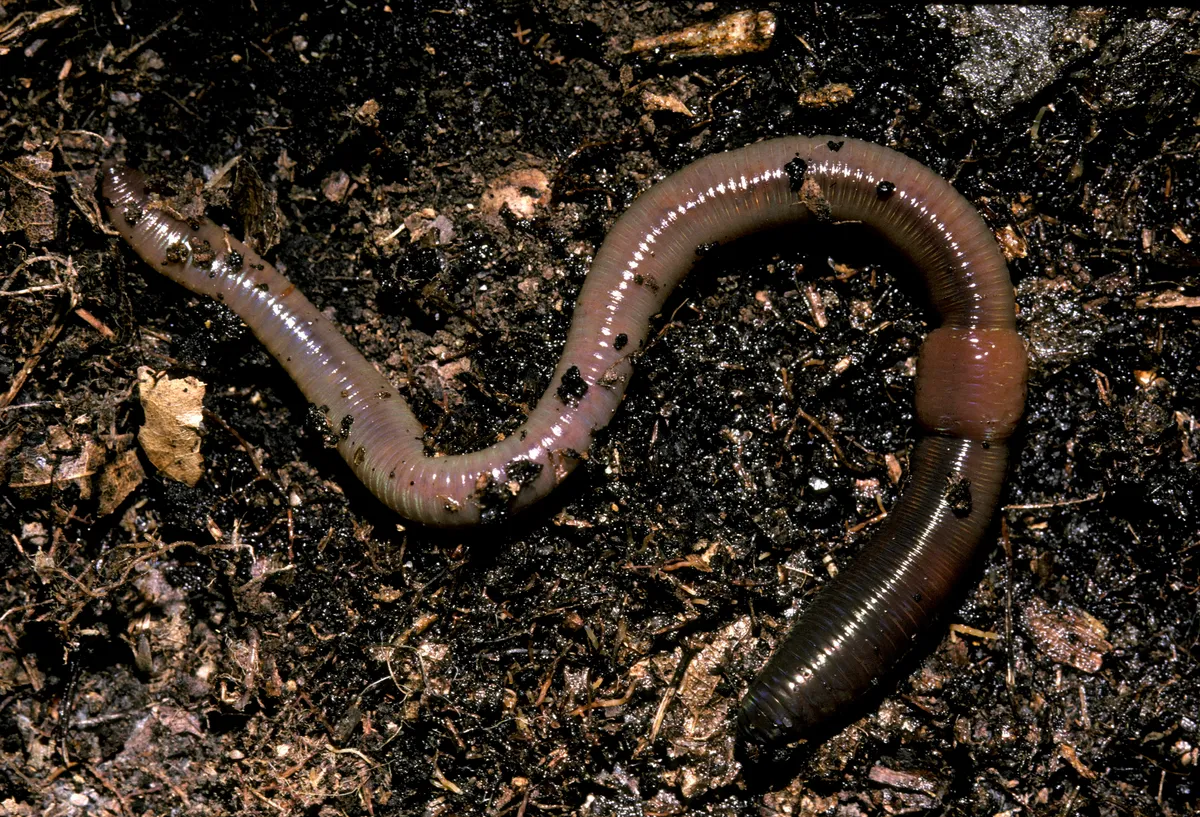Overlooked and undervalued, the earthworm toils away diligently, keeping our soils fertile, healthy and productive. It’s time we took a closer look at these unsung heroes, says Joanna Carter.
What are worms?
A ‘worm’ is defined as any of a number of creeping or burrowing invertebrate animals with long, slender soft bodies and no limbs.
This definition encompasses a wide range of invertebrates including nematodes (roundworms), cestoda (tapeworms) and annelids (earthworms). In fact, some vertebrates are classified as a ‘worm’, such as the slow worm, a limbless burrowing lizard. The lugworm is a member of the annelid family and although you may never have seen one, it leaves behind some familiar sights on a beach at low tide in the form of worm casts.
- Can worms jump?
- What are ice worms and how do they survive freezing conditions?
- Scientists discover the ‘worm’ is in the alcoholic drink mezcal
What do earthworms do for our soil?

All organisms, large or small, play a vital role within their own food chain and earthworms are no different. Without the earthworms’ first breaking organic matter down into smaller pieces, bacteria and fungi can’t release nutrients back into the soil.
The first extraordinarily valuable thing that earthworms do is turn the soil over. Every year, earthworms bring a layer of soil to the surface that is between one millimetre and 15cm thick. In the UK, the upper 15cm may be turned over every 10 to 20 years.
Earthworms also incorporate organic matter – they can consume the equivalent of 2,000kg of leaf litter per hectare over winter.
They fertilise the soil by producing nutrient- rich excreta in the form of ‘casts’. The amount of phosphorus (an essential nutrient for plants) in an earthworm’s cast is often five to 10 times higher than the surrounding surface soil.
They are also integral in enabling aeration and water infiltration – the tunnels they create can stretch down three metres into the ground, which help oxygenate the soil and aid drainage.
Do we have enough earthworms in our fields?
The number of earthworms per square metre varies from just one or two up to 1,000. Grasslands and woodlands typically have populations of around 400 per square metre while arable soils have smaller populations, generally not more than 100 per square metre.
Conventional ploughing causes habitat disturbance, which can lead to a decline of some earthworm species – some arable soils have just 15 earthworms per square metre.
The anecic earthworms, which build permanent vertical burrows that extend from the soil surface down through the mineral soil layer, are particularly affected, as they are often caught by the machinery and either chopped in two or left exposed to predators on the surface.
The answer to the question is probably no, we don’t have enough earthworms left in our arable fields, which doesn’t bode well for the future of our native earthworms and our food production.
So what can we do?
With the ever-increasing demand on farmers to produce higher yields and higher quality crops, we can make better use of earthworms by following some worm-friendly farming methods such as reducing plough use, making better use of organic matter and careful choice of agro-chemicals.
Images @ Getty Images
